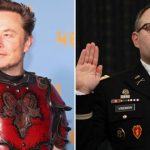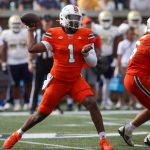Elon Musk has been called out for a spate of strange fibs lately (and if anything, he should have been called out for many more). Here’s the latest: At Tesla’s We, Robot event this week, the Optimus robot that served attendees drinks were not as autonomous as Musk was claiming. According to multiple reports, the Tesla robots were operated by humans using remote controls.
But if it seems like Musk is plumbing new depths in his bid to make Tesla look like it has its finger on the future’s pulse (rather than having a Cybertruck-shaped millstone around its neck), think again. Fake product demos — and in particular, fake autonomous machines — date back to at least the Napoleonic age.
Musk is simply repeating a trick so old, Benjamin Franklin fell for it.
Here are a few of the more well-known examples, starting with the not-so-remote-controlled:
Mechanical Turk, the Optimus of its day
Credit: Florilegius/Universal Images Group via Getty Images
This mechanical chess player with arms and a cabinet — with an actual chess master hidden inside — was the hit product launch of the brass and wood era.
The Turk’s fakery was kept hidden for more than 80 years, and even then it inspired knock-off models. One of them, Mephisto, had a chess master operating it by (you guessed it) remote control.
The original Turk’s creator, Wolfgang von Kempelen, was a genuine inventor, a steampunk type who labored 20 years to successfully create a speech synthesizer. But he wasn’t above expending brain power on this straight-up hoax, with elaborate shifting cabinets of fake machinery hiding the human.
Kempelen tried to avoid doing many product demos, but relented when it became a moneyspinner. After he died, a musician bought the Turk and made the hiding part even more elaborate.
The second owner even had the brass appendages to pit his creation against Napoleon Bonaparte — and have it correct the European tyrant’s illegal chess moves. Later robot “inventors” took note: The more brazen the fake, the more people seemed to believe it.
Steve Jobs’s iPhone fakery
Credit: David Paul Morris/Getty Images
Speaking of tyrants, the Apple co-founder and guru was famously said to have created a “reality distortion field” around products. And on what became the most important demo day of his life, the iPhone unveiling in January 2007, Jobs wasn’t above faking a detail or two.
This was six months before the launch of what some fans were already calling the Jesus phone, and the prototype models were not ready for primetime. To avoid crashes and freezes during his demo, Jobs used multiple prototypes and a little sleight of hand.
Each of those iPhones was designed to follow what his engineers called a “golden path,” a very specific sequence of actions, while giving the impression that Jobs was freestyling his way around the device. They also had what you might call a cellular distortion field: the bars at the top of their screens claimed full service no matter what.
Google’s voice assistant calling … who?
These days, the Silicon Valley search giant likes to point out it was deeply involved in AI before AI became cool. That’s true — but Google also appears to have been doing fake AI demos before they were cool.
At Google I/O 2018, CEO Sundar Pichai demonstrated an AI-powered voice assistant that allegedly called a local hair salon and a local restaurant, live, to make reservations. Both businesses apparently picked up the phone and said, “How can I help you?”
Axios quickly ascertained that none of the salons and restaurants in the Mountain View area answered the phone that way. No subsequent questions about this to Google spokespeople were ever answered.
Gemini AI ain’t that fast
What is a fake product demo, anyway? If deceptive video editing is included in the description, then a Google demonstration of its AI, Gemini, from December 2023 certainly counts.
Many viewers did not realize that the video in question was sped up and had voice prompts dubbed in. Google claimed that this still made the demo “real,” but as one user noted: “real but shortened isn’t a thing.”
Tesla’s self-driving deception
Also not a thing: Fully Self-Driving (FSD) Teslas. At least, not as seen in a 2016 video that a Tesla engineer later testified was staged. The video claimed that the driver in it was only there for legal reasons.
But the Model X in question followed a predetermined route, the Tesla engineer said when questioned in a lawsuit over an Apple engineer’s death in a crash last year. The video showed capabilities that the car’s software did not then have, he added, such as stopping at a red light or accelerating at a green. There were multiple takes edited together, and the human driver often intervened.
That was far from the only outlandish claim Musk made about self-driving technology. At time of writing, there are more than a dozen lawsuits pending that claim customers were duped into believing their Teslas could drive themselves, leading to injuries and deaths. Three will go to trial in 2025, including the case of the Apple engineer. The National Highway Traffic Safety Administration and Justice Department have launched their own autopilot investigations.
Given all that, Musk can count himself lucky that the worst Tesla’s remote-controlled Optimus did was dance and pour drinks.






